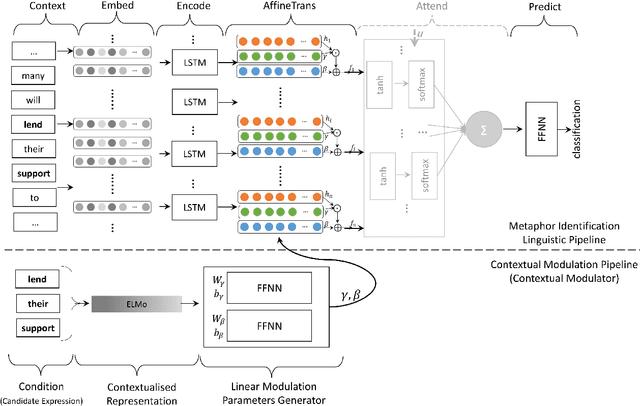Omnia Zayed
Towards Semantic Integration of Opinions: Unified Opinion Concepts Ontology and Extraction Task
May 24, 2025Abstract:This paper introduces the Unified Opinion Concepts (UOC) ontology to integrate opinions within their semantic context. The UOC ontology bridges the gap between the semantic representation of opinion across different formulations. It is a unified conceptualisation based on the facets of opinions studied extensively in NLP and semantic structures described through symbolic descriptions. We further propose the Unified Opinion Concept Extraction (UOCE) task of extracting opinions from the text with enhanced expressivity. Additionally, we provide a manually extended and re-annotated evaluation dataset for this task and tailored evaluation metrics to assess the adherence of extracted opinions to UOC semantics. Finally, we establish baseline performance for the UOCE task using state-of-the-art generative models.
A Hybrid Approach To Aspect Based Sentiment Analysis Using Transfer Learning
Mar 25, 2024Abstract:Aspect-Based Sentiment Analysis (ABSA) aims to identify terms or multiword expressions (MWEs) on which sentiments are expressed and the sentiment polarities associated with them. The development of supervised models has been at the forefront of research in this area. However, training these models requires the availability of manually annotated datasets which is both expensive and time-consuming. Furthermore, the available annotated datasets are tailored to a specific domain, language, and text type. In this work, we address this notable challenge in current state-of-the-art ABSA research. We propose a hybrid approach for Aspect Based Sentiment Analysis using transfer learning. The approach focuses on generating weakly-supervised annotations by exploiting the strengths of both large language models (LLM) and traditional syntactic dependencies. We utilise syntactic dependency structures of sentences to complement the annotations generated by LLMs, as they may overlook domain-specific aspect terms. Extensive experimentation on multiple datasets is performed to demonstrate the efficacy of our hybrid method for the tasks of aspect term extraction and aspect sentiment classification. Keywords: Aspect Based Sentiment Analysis, Syntactic Parsing, large language model (LLM)
Contextual Modulation for Relation-Level Metaphor Identification
Oct 12, 2020



Abstract:Identifying metaphors in text is very challenging and requires comprehending the underlying comparison. The automation of this cognitive process has gained wide attention lately. However, the majority of existing approaches concentrate on word-level identification by treating the task as either single-word classification or sequential labelling without explicitly modelling the interaction between the metaphor components. On the other hand, while existing relation-level approaches implicitly model this interaction, they ignore the context where the metaphor occurs. In this work, we address these limitations by introducing a novel architecture for identifying relation-level metaphoric expressions of certain grammatical relations based on contextual modulation. In a methodology inspired by works in visual reasoning, our approach is based on conditioning the neural network computation on the deep contextualised features of the candidate expressions using feature-wise linear modulation. We demonstrate that the proposed architecture achieves state-of-the-art results on benchmark datasets. The proposed methodology is generic and could be applied to other textual classification problems that benefit from contextual interaction.
 Add to Chrome
Add to Chrome Add to Firefox
Add to Firefox Add to Edge
Add to Edge